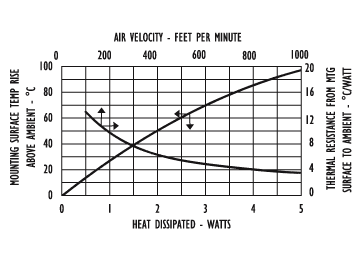Preventing electronic circuits from getting too hot is not just about cooling but also trying to minimize the excess heat being generated in the first place. For a digital circuit that can be a case of reducing the voltage or clock speed, or dynamically altering the clock speed to suit what is required at the time. Microcontrollers often have a software controllable on-the-fly clock speed switching ability making that straightforward. For a power circuit it can be about choosing a device with the fastest switching time and lowest ON resistance or an inductor with the lowest losses for a switching regulator. With the modern world being more and more dependent on battery power, reducing the power consumption in the first place is important.
Assuming you have done all that, you may still have some heat to move away from the electronic devices and into the outside world. How you do that depends on the device you are trying to cool. Inductors don’t usually have the provision for a heat sink so if your inductor or transformer is getting hot and convection isn’t enough then you will need to add some air circulation. Normally this would mean allowing cool air into the PCB enclosure and allowing warm air out.
Depending on the device being cooled it can need some guesswork and experimentation to determine the required airflow. While you would be able to find a useful curve for a heat sink such as this:

which will give the temperature rise versus power for a given air flow, for a lot of devices you will not have that level of data.

Also, if a reasonable amount of sealing is required for preventing water ingress you will not be able to have holes in the enclosure. Just moving the air around the enclosure may help to cool the circuits a little, but there are ways to improve on that. A heat pipe can be used which helps move heat from one place to another, for example to a heatsink on the outside of an enclosure. There are several types of heat pipe but many use a gas to move the heat. They are bi-directional in that they will move heat from the hot end to the colder end of the heat pipe.
Another option for moving heat around in a sealed system is a thermoelectric cooler using the Peltier effect. These semiconductor devices move heat from one side to another with the application of electricity. Unfortunately the power used to supply the Peltier device also generates heat so that is additional heat to be dissipated on the heatsink side. They tend to be most useful where you want to cool something below ambient temperature such as cooling CCD imagers for low noise e.g. astronomy.
Newer semiconductors create their own problems when trying to keep them cool because they are often very small and with no easy way of adding a heatsink. For example, the Infineon AUIRFN8405 MOSFET (previously International Rectifier) can dissipate 136W provided you can keep the case to 25°C but it is in a 5mm x 6mm PQFN package.

Often you will only get a few basic figures from the datasheet for the thermal resistance from junction to case such as 1.1°C/W for the AUIRFN8405. To work out what power you can actually dissipate you need to know the actual case temperature you will achieve on your PCB which can be tricky. You will be relying on the PCB to take the heat away either in the top copper layer but also possibly using inner layers and the bottom layer as well. Some device manufacturers will give a value for the °C/W when the device is mounted on a PCB of a given area. However, some experimentation and measurement will often be required.
Getting the heat away from the device can be improved using a metal core PCB or IMS – Insulated Metal Substrate. These are usually single sided or double sided PCBs with an aluminium backing or core. Aluminum is a very good conductor of heat. Copper is also a good heat conductor but the very thin copper used on a PCB limits the usefulness for spreading heat. You are still likely to need to do some experimentation to see how well you are removing the heat with an IMS PCB. While some performance figures will be available for the PCB, the real world is usually a lot more messy than a simple 50mm x 50mm square heatsink area that might be specified in a datasheet. You will probably have an odd shape for the PCB heatsink area and possibly other devices dissipating heat close to the main device which will be difficult to take into account. IMS PCBs are particularly useful for high power LEDs where simple circuitry dissipates a lot of excess heat.
Another common method of moving heat around with tiny packages is to use small vias actually under the device on the package heat pad. Texas Instruments’ application note AN-1520 (file name snva183b.pdf) has some interesting data and graphs showing, for example, the variation in effectiveness of the number and distribution of vias for different die sizes.



Leave a Reply